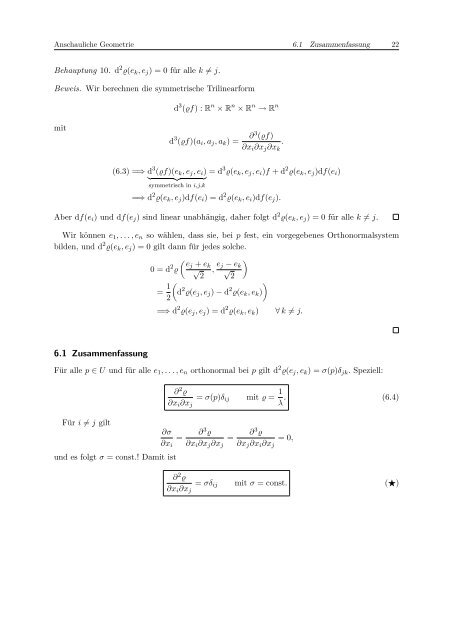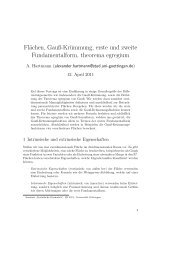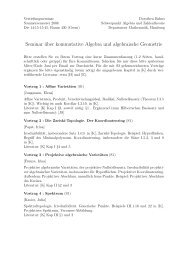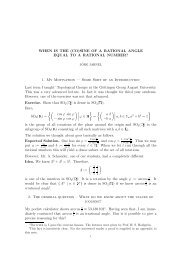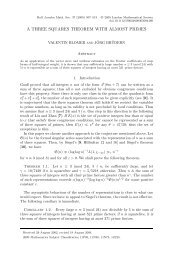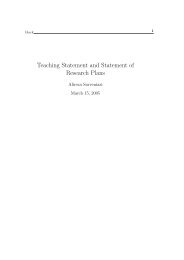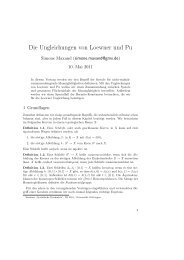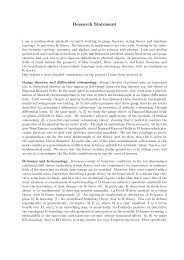Anschauliche Geometrie
Anschauliche Geometrie
Anschauliche Geometrie
Sie wollen auch ein ePaper? Erhöhen Sie die Reichweite Ihrer Titel.
YUMPU macht aus Druck-PDFs automatisch weboptimierte ePaper, die Google liebt.
<strong>Anschauliche</strong> <strong>Geometrie</strong> 6.1 Zusammenfassung 22<br />
Behauptung 10. d 2 ϱ(e k , e j ) = 0 für alle k ≠ j.<br />
Beweis. Wir berechnen die symmetrische Trilinearform<br />
d 3 (ϱf) : R n × R n × R n → R n<br />
mit<br />
d 3 (ϱf)(a i , a j , a k ) =<br />
∂3 (ϱf)<br />
∂x i ∂x j ∂x k<br />
.<br />
(6.3) =⇒ d 3 (ϱf)(e k , e j , e i ) = d 3 ϱ(e k , e j , e i )f + d 2 ϱ(e k , e j )df(e i )<br />
} {{ }<br />
symmetrisch in i,j,k<br />
=⇒ d 2 ϱ(e k , e j )df(e i ) = d 2 ϱ(e k , e i )df(e j ).<br />
Aber df(e i ) und df(e j ) sind linear unabhängig, daher folgt d 2 ϱ(e k , e j ) = 0 für alle k ≠ j.<br />
Wir können e 1 , . . . , e n so wählen, dass sie, bei p fest, ein vorgegebenes Orthonormalsystem<br />
bilden, und d 2 ϱ(e k , e j ) = 0 gilt dann für jedes solche.<br />
(<br />
0 = d 2 ej + e k<br />
ϱ √ , e )<br />
j − e<br />
√ k<br />
2 2<br />
= 1 (<br />
)<br />
d 2 ϱ(e j , e j ) − d 2 ϱ(e k , e k )<br />
2<br />
=⇒ d 2 ϱ(e j , e j ) = d 2 ϱ(e k , e k ) ∀ k ≠ j.<br />
6.1 Zusammenfassung<br />
Für alle p ∈ U und für alle e 1 , . . . , e n orthonormal bei p gilt d 2 ϱ(e j , e k ) = σ(p)δ jk . Speziell:<br />
Für i ≠ j gilt<br />
∂ 2 ϱ<br />
∂x i ∂x j<br />
= σ(p)δ ij mit ϱ = 1 λ . (6.4)<br />
∂σ<br />
∂x i<br />
=<br />
und es folgt σ = const.! Damit ist<br />
∂ 3 ϱ<br />
∂x i ∂x j ∂x j<br />
=<br />
∂ 3 ϱ<br />
∂x j ∂x i ∂x j<br />
= 0,<br />
∂ 2 ϱ<br />
∂x i ∂x j<br />
= σδ ij mit σ = const. (⋆)


